The shrine name refers to the basilica of Saint Mary Major on the Esquiline Hill in Rome, where legend says that snow fell in the summertime. The shrine is operated by the Missionary Oblates of Mary Immaculate, which is one of the Church's largest religious orders with 4,500 priests and brothers serving the poor in 71 countries.
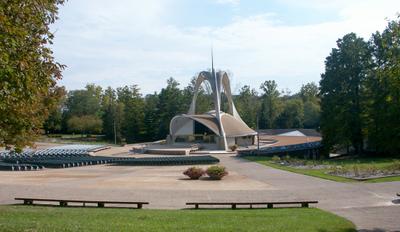
Here is the outdoor chapel, located at the bottom of a large grass bowl, and is the site of the shrine's annual Healing Novena and Christian music festival. This chapel was constructed in 1960, and is an example of Modern design that is pretty and has iconographic value. Thin concrete shell construction, as used here, was a popular technique for making fanciful structures; other local buildings include the Lambert-St. Louis International Airport terminal, the Saint Anselm Parish church in Creve Coeur, Missouri, and the soon-to-be-destroyed Busch Stadium. In the Post-Concilliar era, church architecture quickly became ugly, so this may be one of the last attempts of reconciling Modernity and Catholicism.
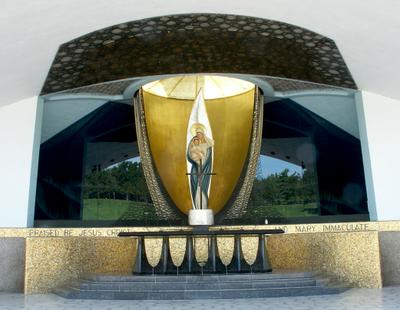
Here is a close-up view of the outdoor altar.
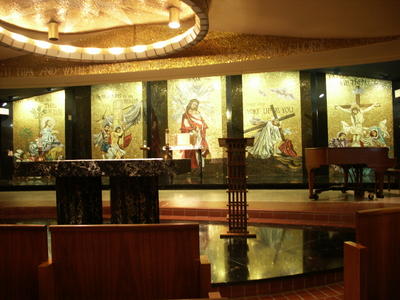
Underneath the outdoor chapel is Christ the King Chapel, which is well-decorated with mosaics in the style of the Cathedral Basilica of Saint Louis.

Resurrection mosaic near the underground Chapel.
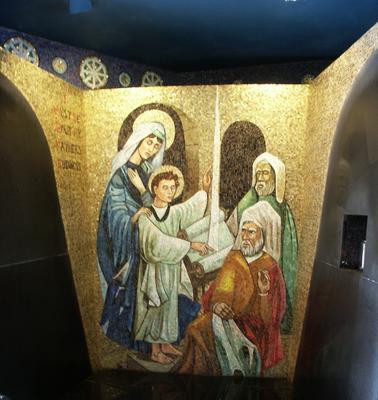
Mosaic of Finding the Child Jesus in the Temple, near the underground chapel.

The Millennium Spire. Underneath are thousands of candles burning.
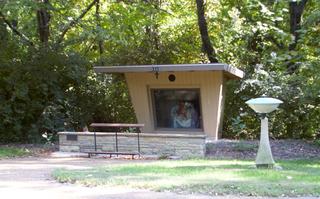
A drive-through Station of the Cross. This is an obvious example of American enculturation! In addition to this path, there are several devotional trails throughout the shrine.
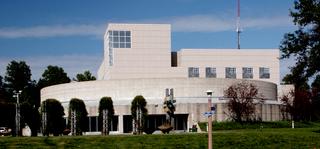
This is Our Lady of the Snows Church, constructed in 1990. It is based on the USCCB statement of 1978, "Environment and Art in Catholic Worship". It is too Modern for me. Note the red and white tower in the background; the rock station WMRY broadcast from here in the 1980s. Yes, MRY stands for "Mary". The Shrine operates a radio ministry for the deaf and nursing homes.

The Lourdes Grotto, with the inscription "Que soy era Immaculada Councepciou".
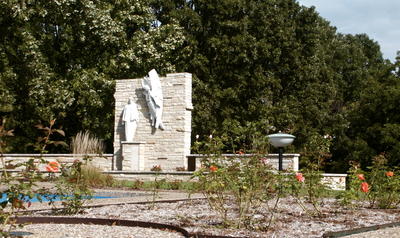
The Annunciation Garden, one of many rose gardens at the Shrine. The rose, beautiful and fragrant, yet with painful thorns, is a natural Marian symbol.

No comments:
Post a Comment